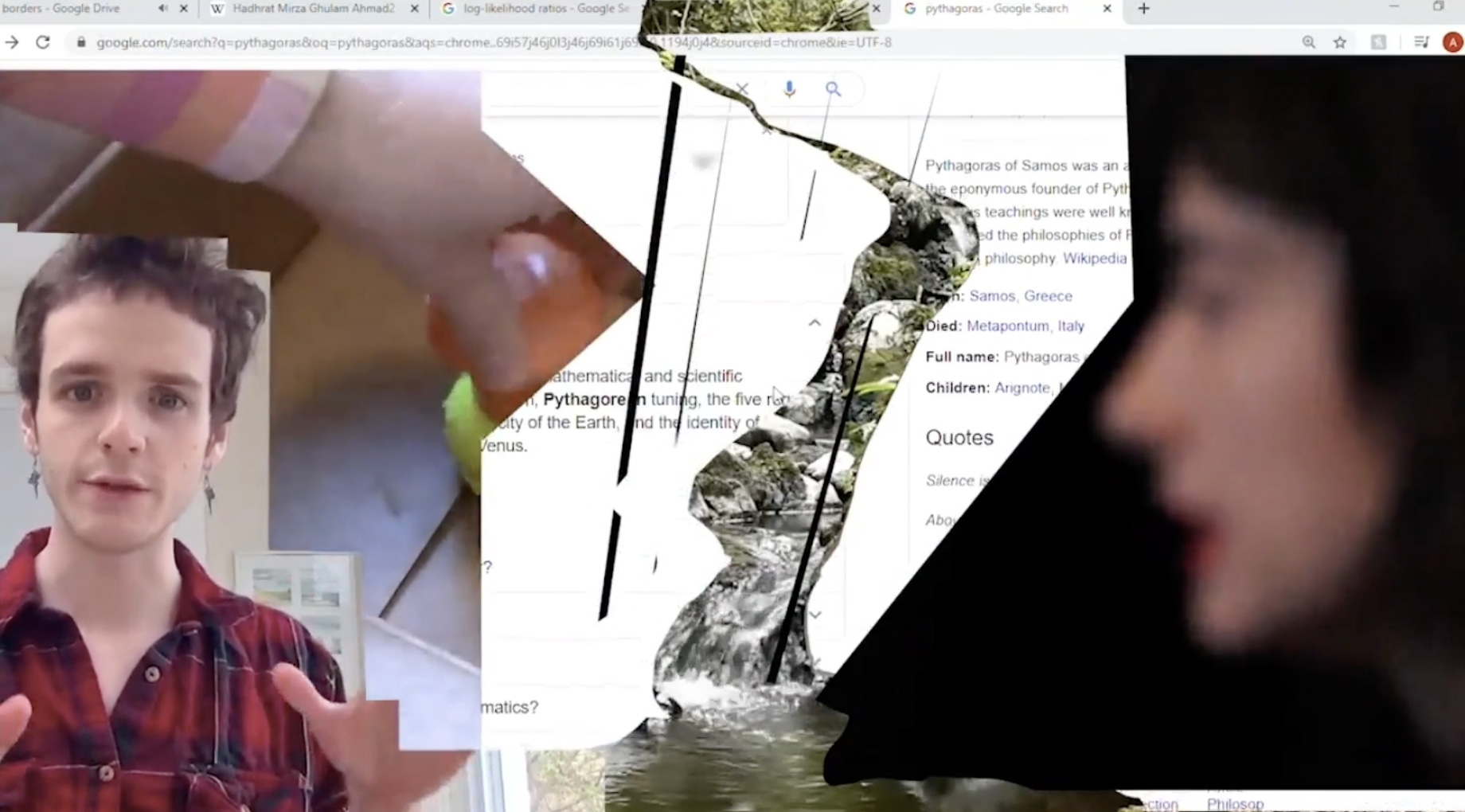Borders is a collaborative, audiovisual assemblage that addresses the multiplicity of borders: how they are gendered, political, visual, auditory, linguistic, and physical, and cerebral. Created and performed in collaboration with RISD students Asher White, Muireann Nic an Bheatha, Teodore Von Baeyer, Ariana Padovano, Borders aggregates and builds upon its namesake’s abundant interpretations, transforming into a sensory experience that culminates into a composition by the musician FIELDED. This performance is composed of an introduction by artist Gordon Hall and a series of lectures. The total running time is 29:51 minutes.
Borders was first presented by The Center for Experimental Lectures, in collaboration with the Rhode Island School of Design Department of Sculpture, The RISD Museum, and RISD’s Center for Arts & Language on May 12, 2020.
Tsabar’s practice investigates the hierarchical structures rooted within the culture of popular music. Through her performances, installations, sculptures, and collaborations, Tsabar disrupts the stasis between the viewer and art object through the activation of a sonic, musical dynamism.

Naama Tsabar, Borders (still), 2020
Naama Tsabar lives and works in NYC. She received her MFA from Columbia University in 2010. Solo exhibitions and performances of Tsabar have been presented at the Solomon R. Guggenheim Museum (New York), Museum of Art and Design (New York), The High Line Art (New York), Nasher Museum (Durham, NC), Kunsthuas Baselland (Switzerland), Palais De Tokyo (Paris), Prospect New Orleans, Tel Aviv Museum of Art, The Herziliya Museum for Contemporary Art in Israel, MARTE-C (El Salvador), CCA Tel Aviv (Israel), Faena Buenos Aires, Frieze Projects New York, Kasmin Gallery (New York), Paramo Gallery (Guadalajara), Dvir Gallery (Israel and Brussels), Spinello Projects (Miami), Shulamit Nazarian (Los Angeles). Selected group exhibitions featuring Tsabar’s work include Schirn Kunsthalle in Frankfurt, Elevation 1049 Gstaad (Switzerland), Goodman Gallery (South Africa), TM Triennale, Hasselt Genk, Belgium, ‘Greater New York’ 2010 at MoMA PS1, Museum Dhondt-Dhaenens (Belgium), The Bucharest Biennale for Young Artists, Hessel Museum of Art at CCS Bard, Casino Luxembourg (Luxembourg), ExtraCity in Antwerp (Belgium). Tsabar’s work has been featured in publications including ArtForum, Art In America, ArtReview, ARTnews, The New York Times, New York Magazine, Frieze, Bomb Magazine, Art Asia Pacific, Wire, and Whitewall, among others.
Anna L. Tsing, The Mushroom at the End of the World, 2015↩
Le Guin positions the container, rather than the spear, as the first human tool, following the writings of Elizabeth Fisher. Ursula K. Le Guin, The Carrier Bag Theory of Fiction, 1986↩
In “On Non-Scalability,” Tsing establishes that a primary critique of scalable frameworks is of their inability to maintain diversity. Taking that intrinsic flaw into account, we aim to not promote the amplification of a singular feminist framework. Anna L. Tsing, “On Non-Scalability,” 2012↩
In an interview with Jorge Cotte, Wendy Hui Kyong Chun states, “Every form of communication is based on a fundamental leakiness.” These leaks can be seen as moments of possibility. Wendy Chun, “Reimagining Networks,” The New Inquiry, 2020↩
Anna L. Tsing, The Mushroom at the End of the World, 2015; Anna L. Tsing, Roxana Fabius, Patricia M. Hernandez, Mindy Seu, “Big histories are always best told through insistent, if humble, details,” The Scalability Project, A.I.R. Gallery, 2020↩
In Glitch Feminism, Legacy Russell sees the glitch as a catalyst rather than an error, a “correction to the machine.” Legacy Russell, “Digital Dualism And The Glitch Feminism Manifesto,” Cyborgology, 2012↩
Here we are drawing from Judy Wajcman’s definition of interpretive flexibility. Wajcman describes technology’s malleable character, emphasizing that there is nothing inevitable about the way technologies evolve. Users have the power to radically alter technologies’ meanings and deployment. Judy Wajcman, TechnoFeminism p.37↩